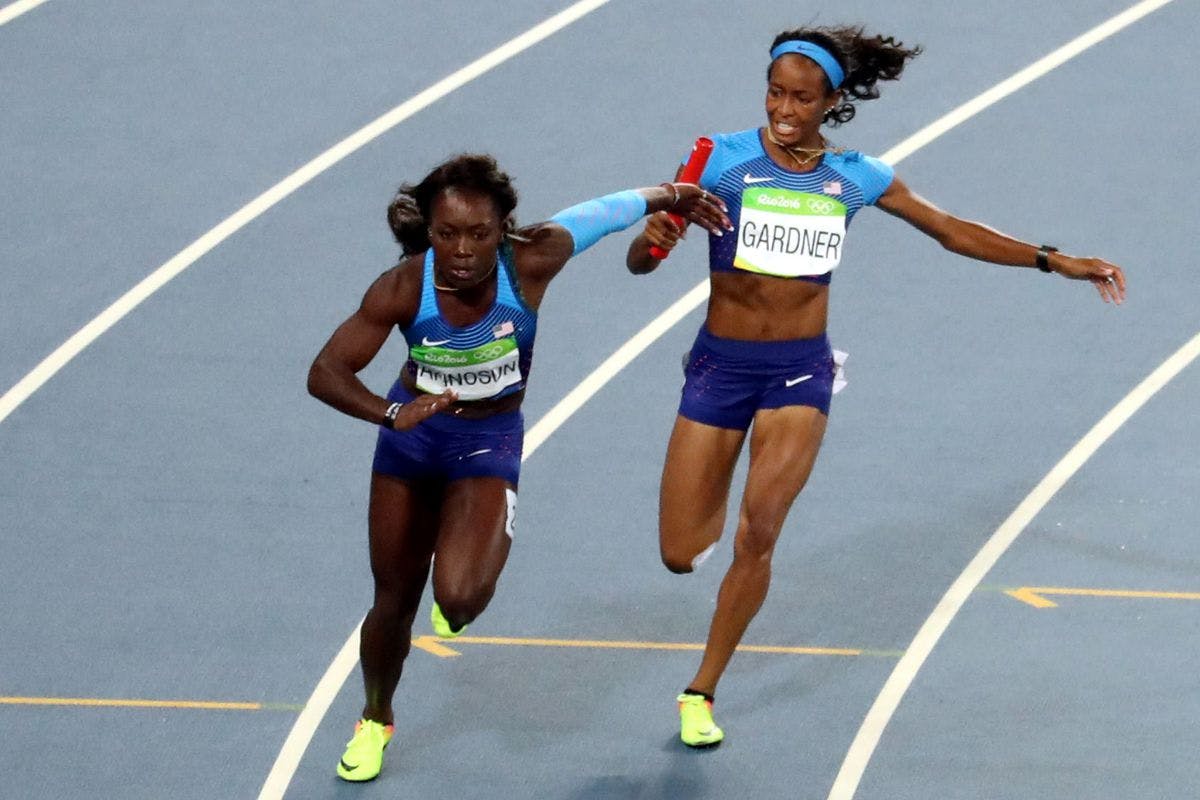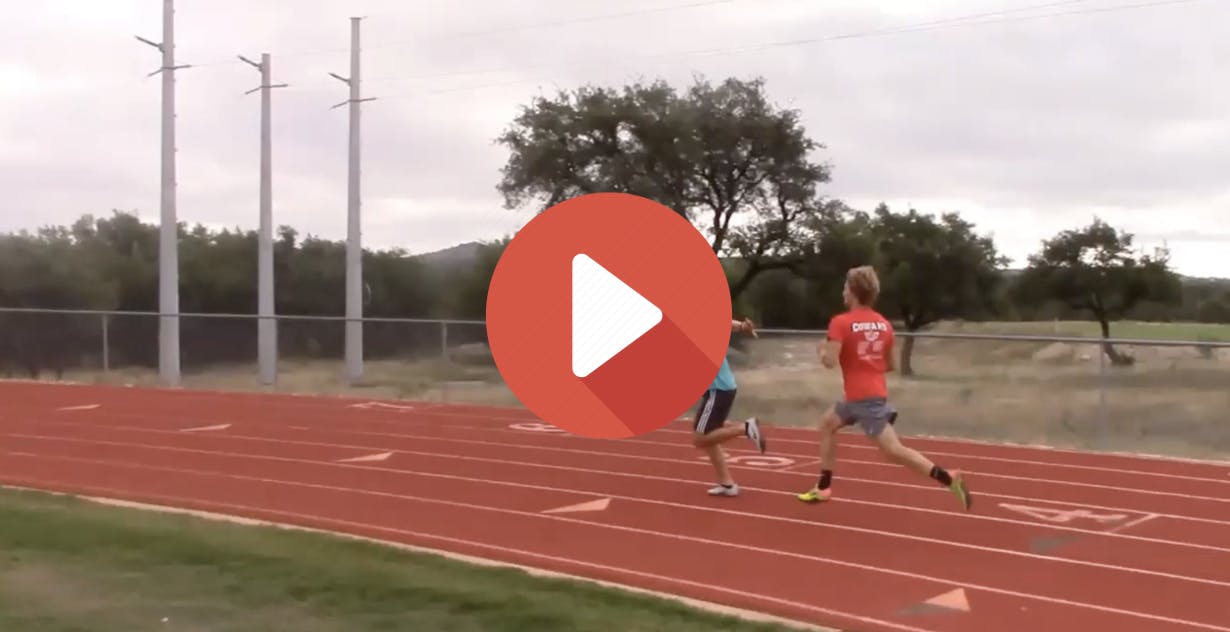Featured courses
- The Ultimate Guide to Coaching Track and Field by Jackson Chlebowy
- How TCU Coach Khadevis Robinson Builds Mental Toughness for Big 12 Track by William Markey
- Two Points of Focus When Coaching and Training Hurdles by Grant Young
- Four Keys to Maximize Winning Potential in a 400m Race by Grant Young
- Three Lessons Every Distance Running Coach Should Know by Grant Young
- Olympic Medalist Jasmine Moore’s Triple Jump Approach Technique Keys by Grant Young
- Build Strong Triple Jump Foundations with 3 Key Drills by William Markey
- Two Cues to Help With Track and Field Relay Handoffs by Grant Young
- Four Shot Put Drills to Help Develop Your Athletes by Grant Young
- Three Training Tips For Coaching 400m Runners by Grant Young
- Four Tips for Teaching the Javelin Throw by Grant Young
- 3 Pole Vault Check Points From Legendary Kansas Coach Tom Hays by Grant Young
- Two Valuable Hammer Throw Training Tips by Grant Young
- 3 Must-Try Offseason Shot Put Drills by William Markey
- Four Essential Tips For Coaching Track Relays and Sprints by Grant Young
- Florida Gators Coach Nic Petersen’s Two Keys for Teaching the Triple Jump by Grant Young
- Three Effective Drills for Improving the Long Jump by Grant Young
- Three Drills for Sprinters That Track Coaches Swear By by Grant Young
- Four Pole Vault Drills All Track and Field Coaches Should Know by Grant Young
- Explosive Track and Field Training to Level Up This Summer by Tyler Rathke
- Throwing Secrets: The Entry by Tyler Rathke
- How to Find an Endurance Athlete’s Proper Training Pace by Grant Young
- The Technique Behind Mykolas Alekna’s Discus World Record by Grant Young
- How to Build a Sprinter's Training Regimen by Grant Young
- How to Teach the Glide Shot Put by Grant Young
- Three Hurdle Drills All Track Coaches Should Know by Grant Young
- How Distance Running Coaches Can Get the Most Out of Their Athletes by Grant Young
- The Technique Behind Mondo Duplantis' Pole Vault World Record by Grant Young
- How to Coach Weightlifting For Increased Speed and Acceleration by Grant Young

Two Cues to Help With Track and Field Relay Handoffs
- By Grant Young
In track and field, the relay race is a true test of both individual speed and teamwork, which is why having relay handoff drills and techniques nailed down is paramount for any coach.
A successful handoff can propel a team to victory, while a poor exchange can lead to disqualification or a lost position. The handoff process involves precise timing and coordination. Each runner must know exactly when to accelerate and when to pass the baton. The outgoing runner typically begins their sprint before receiving the baton, creating a seamless transition that maximizes speed.
However, if the incoming runner passes the baton too early or too late, it could disrupt the flow and slow down the team. Moreover, the quality of the handoff itself can make a difference. A clean exchange, where the baton is smoothly passed without dropping it or losing momentum, is essential.
A dropped baton not only wastes time but usually results in disqualification, emphasizing how even a minor mistake can have major ramifications. In competitive environments, where races are often decided by milliseconds, the importance of practice and strategy becomes clear.
Teams spend countless hours perfecting their handoffs, refining their techniques, and building the trust necessary for flawless exchanges. This preparation is what sets successful teams apart.
Ultimately, the handoff is a microcosm of the relay race—where individual performance and teamwork intersect. The capability to execute a perfect handoff can make or break a race, showcasing not just the speed of the runners, but their ability to work together under pressure. In the world of track and field, mastering the handoff can be the key to standing atop the podium.
In his ‘Relays the Visual Way: Handoffs with Visual Cues’ clinic, Jonathan Downey (track and field coach at Christoval High School) reveals multiple steps and drills for relay handoffs that you need to know in order to perfectly execute handoffs and have your team never drop the baton again.
From telling your athletes where to line up to drills that allow them to visualize it, if you are a coach who wants your team to always pull off handoffs perfectly, then this is the clinic for you. This is why we’ve taken two of his strongest insights about perfecting the relay handoff and are including them for you below.
4x200 - Look It In
Coach Downey discusses how in all of his research watching and studying the world’s best relay racers, he has noticed how every single 4x200 relay utilizes the same placement when figuring out where the exchange the baton.
He says that they start in the International space on the track, an entire 10 steps in front of the exchange zone. From there, the runner will put their back foot even with the 10th step. This is an effective strategy because, in a meet, a runner won’t need a visual cue, and instead can just take their 10 steps and know they’re in the correct position.
As soon as the runner gets into the International size, the one waiting for the baton is going to break out at a full-speed sprint. Their hand will go backward as soon as the big arrow of the exchange zone is still in front of the runner.
From there, everything is the same as a 4x100 exchange aside from the fact that the runner will turn their head around to see the exchange occurring.
One tip that Coach Downey swears by during this aspect of the exchange is that he wants his runners to imagine that there’s a string running from their chin to their hand so that the two are acting in accordance with each other. In this case, the head turn during the exchange will occur in tandem with the hand reaching out and receiving the baton from the previous runner.
This strategy also allows a runner the opportunity to slow down and turn around in case they leave early on accident.
The Handoff

Coach Downey asserts that the most important aspect of getting a relay right is making sure that the runner isn’t going for longer than they need to before handing the baton off. This is why it’s crucial that placement is key, and that the runner who’s receiving the baton isn’t starting too far away from where the runner is going to be.
Another important due that Coach Downey alludes to comes down to hand placement. While some track and coach coaches say that they want their runner’s hand to be close to parallel with their shoulder, there’s no way that a runner is going to know whether that’s the case in the heat of a race.
Rather, Coach Downey suggests that a runner’s hand should be placed at the same height where their hands naturally go during the course of their 200m race. Therefore, this is a natural hand position that won’t force the runner who’s handing the baton off to over-exert themselves or slow down to execute the handoff.




